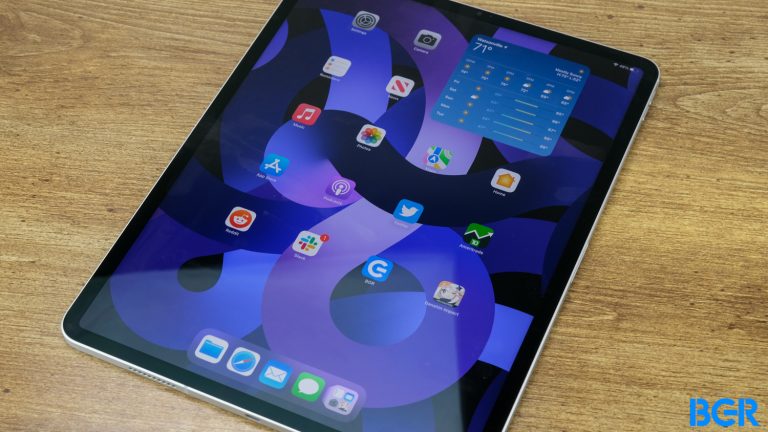iPadOS 18 is Apple‘s upcoming operating system for its iPad models, including the rumored OLED iPad Pro. Expected to be announced during the WWDC 2024 keynote, there are high hopes that Apple will focus on AI, as it needs to catch up with Google, OpenAI, and other top players. Here’s everything you need to know about this operating system.
When will Apple announce iPadOS 18?

Apple should announce iPadOS 18 at WWDC 2024. The Worldwide Developers Conference usually takes place in the first week of June. While it was previously held at the San Jose McEnery Convention Center in San Jose, California, ever since the pandemic started, Apple began pre-recording the WWDC keynote and then switched to a hybrid approach by inviting developers and media to watch the presentation from the Apple Park in Cupertino.
The company is likely to announce the dates for WWDC 2024 in April of this year.
Rumored iPadOS 18 features
The WWDC 2024 keynote is still months away, and it’s harder to predict software changes as Apple has cracked down on leaks. We don’t know much about iPadOS 18’s upcoming features. That said, there are a few rumors regarding iOS 18. Since the operating system updates are usually similar, we can also expect generative AI to be part of iPadOS 18.
According to Bloomberg‘s Mark Gurman, iOS 18 is expected to be a fairly packed update. Internally, Apple’s senior management has described this upcoming operating system as “ambitious and compelling,” which we hope will be true for iPadOS 18 as well.
Generative AI

There are several rumors about Apple focusing on generative AI features for iOS 18. While it’s unclear if they will be exclusive to the iPhone’s operating system alongside the iPhone 16, it’s possible that Apple will adopt snew AI features for Apple Silicon iPads, especially the long-rumored M3 iPad Pro.
For example, Haitong International Securities analyst Jeff Pu wrote that iOS 18 could finally add generative AI features for the iPhone in late 2024. He suggested Apple was building a few hundred AI servers in 2023 and will build even more in 2024.
By combining cloud-based AI and on-device data processing, Apple would finally roll out its generative AI to iPhone and iPad users by late 2024. The Information reported that Cupertino spends millions of dollars daily to train its large-language models (LLM for short).
While the publication said most of this investment would focus on AppleCare customers, the Siri team plans to incorporate these language models to make complex shortcut integrations more accessible.
What’s interesting about this story is that people on the Apple team believe its most advanced language model, Ajax GPT, which Bloomberg already reported on, might be better than OpenAI’s GPT 3.5. Even though OpenAI is already working on better models, it’s good to know that Apple has dramatically improved in the conversational AI field.
Bloomberg‘s Mark Gurman corroborates Jeff Pu and The Information, as he also believes generative AI will be a significant part of iOS 18 and the iPhone 16.
Journal app

Impressively, one of the best iOS 17 features, the Journal app, wasn’t announced for iPadOS 17. That said, it’s possible that Apple could be planning to expand this app for its tablets with iPadOS 18.
It’s not unusual for the company to announce a feature for the iPhone and later bring to the iPad. It happened with the App Library and customizable Lock Screen, so it could happen once again in the near future.
New emojis
During every iPadOS cycle, Apple always adds new emojis. Even though they don’t come with the first major update, the company unveils them during the life cycle of the newest operating system, most likely with version x.4 of that update.
For iPadOS 17, for example, we expect 100+ new emojis to land on iPad later this year. According to an Emojipedia blog post, there are a total of 108 new emojis, including skin tone modifiers and gender variants, that could be available with Unicode’s Emoji 15.1 update.
The draft list includes a lime, a head shaking vertically, a phoenix (Moltres, for Pokémon fans), and four new gender-neutral family emojis intended to be represented via silhouettes. All of these emojis will be sent for approval this September. We could see them on the iPad with an upcoming iPadOS 17 update if they get approved.
It’s unclear which emojis will be available with iPadOS 18 in 2025.
Official iPadOS 18 download
iPadOS 18 hasn’t been officially announced. Therefore, you can neither test it or download its official version, but we’ll update this section once we learn more about it.
How to download iPadOS 18 beta
At the moment, you can’t download the beta version of this upcoming operating system. Once it’s revealed, you just need to follow these steps:
- On your iPad, open the Settings app
- Tap on General and Software Update
- Tap on Beta Updates and enable iPadOS 18 Developer Beta once it’s available
Compatible iPad models

With iPadOS 17, Apple ditched the iPad 5 and the first-gen iPad Pro. It’s unclear if the company will make more tablets obsolete once iPadOS 18 arrives.
While we still don’t know which models could be ditched with this next operating system update, here are all the iPads that can run iPadOS 17:
- iPad Pro (2nd gen or newer)
- iPad Air (3rd gen or newer)
- iPad mini 5 and iPad mini 6
- iPad (6th gen or newer)








